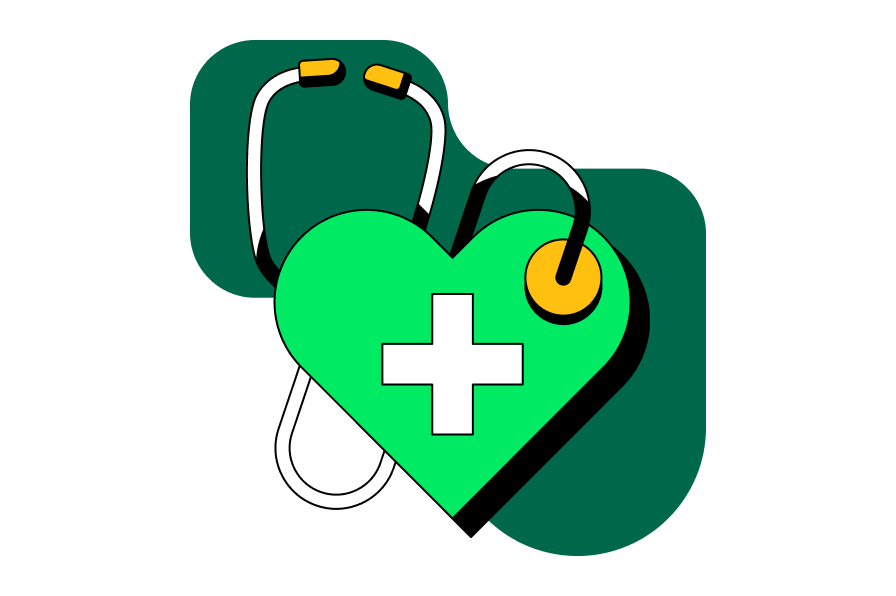Safeguarding Healthcare: Prescribing Strategies to Mitigate Digital Threats

In today's digital age, the healthcare sector is undergoing a rapid transformation. Innovative technologies are enhancing patient care and streamlining operations, but they also bring significant cybersecurity challenges. Healthcare organizations, both public and private, must address these evolving threats to protect critical systems and patient data.
Healthcare has long been a target for cyber threats, with malicious actors becoming more sophisticated over time. The growing use of healthcare technology, including telehealth services and wearable devices, has expanded the attack surface, making robust cybersecurity essential. The primary threats healthcare organizations face are malware and ransomware attacks, which can disrupt vital operations.
This blog, based on a recent conversation I had with Amber Pearson, Executive Director of Information Security Policy, VA at a Health IT Summit panel, will unpack how healthcare organizations – both in the public and private sectors – can ward off emerging cybersecurity threats.
Zero Trust: A fundamental shift
_Thumbnail_BS_SpringGreen.png?auto=format%252Ccompress)
One essential cybersecurity strategy is the adoption of the Zero Trust model. Zero Trust is based on the principle of "never trust, always verify." This approach doesn't automatically trust any entity, whether it's a user, device, or network, based on location or past access. Every access attempt must be verified and validated before entry.
Zero Trust consists of several core components:
- Identity Verification: Users and devices must verify their identity using multi-factor authentication or biometrics.
- Least Privilege Access: Users and devices only get minimal access required, limiting potential damage in the event of a breach. MongoDB's role-based access control features can help enforce the principle of least privilege, ensuring that users and devices only have access to the specific data and functionality necessary for their roles.
- Micro-Segmentation: Dividing the network into smaller segments to contain potential threats.
- Continuous Monitoring: Real-time analysis of network traffic to detect abnormal behavior. MongoDB's scalability and flexibility make it suitable for storing and analyzing large volumes of logs and events, helping identify and respond to suspicious activities promptly.
- Assumption of Breach: Operating with the assumption that a breach has occurred or could happen at any time.
MongoDB can assist in implementing Zero Trust by securely managing patient data and providing a flexible and scalable data storage solution for healthcare applications, including telehealth services, wearable devices, and interconnected systems. It ensures strict control and monitoring of access to patient data, even for users within the network, and third-party vendors and contractors must adhere to the same stringent security standards when accessing healthcare data. Zero Trust is not just a product or service but a comprehensive strategy that demands constant vigilance and a shift in the approach to cybersecurity.
Balancing security and interoperability
_Spot_BS_ForestGreen.png?auto=format%252Ccompress)
Interoperability in healthcare refers to different systems and devices exchanging data effectively. It's crucial for modernizing healthcare systems and delivering high-quality care. However, interoperability introduces complexity and risk in terms of cybersecurity.
Interoperability means more potential pathways for cyber threats. Attackers can exploit vulnerabilities in any connected device or system to gain unauthorized access to sensitive healthcare data. To address this, healthcare organizations should:
- Security by Design: Collaborate with vendors to embed security in system design, including rigorous testing and encryption. MongoDB's built-in flexible security features ensure that data is protected at the database level, and its encryption capabilities can safeguard sensitive healthcare information.
- Continuous Monitoring: Actively watch for anomalies, unauthorized access attempts, or unusual behavior across interconnected systems. MongoDB can play a pivotal role in storing and analyzing logs and event data, facilitating real-time monitoring and threat detection.
- Risk Assessment: Assess risks associated with each device, system, or vendor within the interoperable ecosystem. MongoDB's role-based access control and auditing features can help organizations assess and mitigate risks tied to data access and manipulation.
Interoperability enhances patient care but introduces security challenges. A proactive and collaborative approach is essential to mitigate these risks, protecting patient data in an interconnected healthcare landscape. MongoDB is an ideal partner for healthcare interoperability due to its flexibility, scalability, and robust security features. Most importantly, its document-based architecture allows healthcare systems to seamlessly integrate diverse data sources, such as electronic health records, medical imaging, and patient data, fostering interoperability. The database's ability to handle complex, unstructured data makes it well-suited for the diverse data types prevalent in healthcare.
Don't discount insider threats
Insider threats involve individuals with legitimate access to healthcare systems who misuse data maliciously. To combat these threats, organizations must actively monitor information systems and collaborate with organizations like the Cybersecurity and Infrastructure Security Agency (CISA) for additional defense.
The proliferation of devices and remote work introduces new challenges. Enforcing strict cyber hygiene for all connected devices is vital. Promoting a security-first culture prioritizes open communication, collaboration, and proactive measures. Building organizational resilience, with open communication, regular risk assessments, and engagement at all levels, creates a robust cybersecurity posture.
In conclusion, technological advancement in healthcare must align with a robust cybersecurity strategy. Embracing Zero Trust, balancing security with interoperability, addressing insider threats, and building organizational resilience are essential steps. By promoting a security-first culture and prioritizing cyber hygiene, healthcare organizations can protect patient data and maintain the seamless operation of healthcare facilities in the face of evolving cyber threats.
Visit our Trust Center to learn more about MongoDB's dedication to data security
Read our whitepaper Cybersecurity: Building the Next Generation of Threat Intelligence with MongoDB to learn more about cybersecurity and MongoDB.